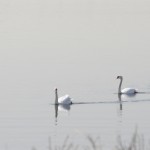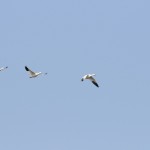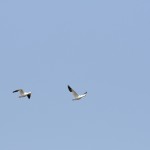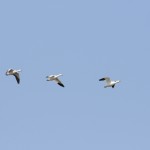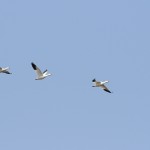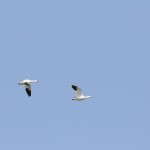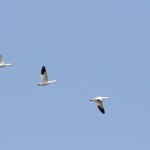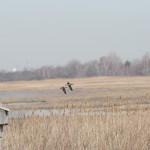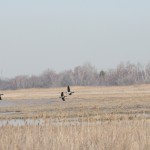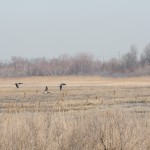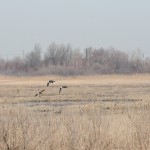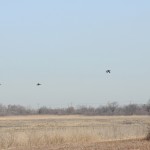The Nikon D300s and the 70-200mm F2.8 ED VR II came out with me to the Jamaica Bay Wildlife Refuge recently. Despite the fact that I went at an inopportune time, I still took back some very nice shots in where I was able to test out the features of the camera and lens. More findings after the jump.
Anyone that shoots wildlife knows that it is best to shoot them during the sunrise or sunset. No matter, preserves are always great places to obtain shots of wildlife, even if you have to stay on the trail. The Nikon D300s helped me photograph the wildlife in combination with the 70-200mm F2.8 ED VR II. I only wish that I had a little more reach with the lens but for what it’s worth they combo did a very good job.
The D300s’ autofocus system works well to identify your target. Additionally, like the D3s it can track movement throughout the frame. This is very useful when combined with a skilled photographer’s ability to pan.
I’ve noticed that I’ve had to go into the settings and do quite a bit of customization to the Nikon’s to work to my needs, and the D300s is no different. For example, when I used to shoot wildlife I remembered that I need to turn off the autofocus confirmation beep because it sounds like a bird and can frighten your subjects. This needed to be done as well. Like the D3s and D3x, it has to be done while going through a long and complicated menu system. Despite this, everything is categorized well and laid out well.
Everything was shot in mostly aperture mode. This was for convenience sakes really just for the tests. In addition to that, the feel of the D300s is perhaps the best I’ve experienced of the three cameras. I’m more used to the 5D Mk II and am considering the purchase of a 7D. Therefore, these cams work well in my hands.
The D300s has a huge advantage over the 7D though: the ability to use Eye-Fi Pro cards. This can save the photographer loads of money because their images can just be sent straight to their editor or a computer if needed. With the 7D, you need to have a wireless transmitter grip attached to the camera because of the fact that it just uses CF cards. The D300s uses both.
The combo can get pretty heavy. I suggest switching off between wrapping the strap around your wrist and keeping it around your neck.
The shutter sound isn’t as loud and obnoxious as the D3s or D3x. That’s great for wildlife and with the right lenses can also be good for events.
The lens is very sharp and colors are rendered very nicely. The Vibration Reduction (VR) is a very welcome addition as I tend to have shaky hands. When put on the D300s you get a crop factor of 1.5x and so the lens has some extra reach focal length wise.
If I were still a celebrity photographer, my camera of choice would either be the D300s or the D700 used with the 24-70mm F2.8 ED or the 70-200mm F2.8 ED VR II. I’d actually lean more towards the D300s. The reason for this is because of the compactness offered when the 70-200mm F2.8 ED VR II is on the camera. Considering the reach that you have coupled with the spectacular autofocus system, you really can’t go wrong with it. Slip the lens hood on backwards when in the bag then put it on correctly when you take it out and you’re all set to rumble. The advantage of the D700 though is full frame. However, speed is what counts in that industry.
More will come soon, I’ve tried to get into Aqueduct Racetrack to shoot some horse racing but am failing horribly at getting in. Well see what comes.
Please Support the Phoblographer
We love to bring you guys the latest and greatest news and gear related stuff. However, can’t keep doing that unless we have your continued support. If you would like to purchase any of the items mentioned, please do so by clicking out link and then purchasing the items as we then get a small portion of the sale to help run the website.



